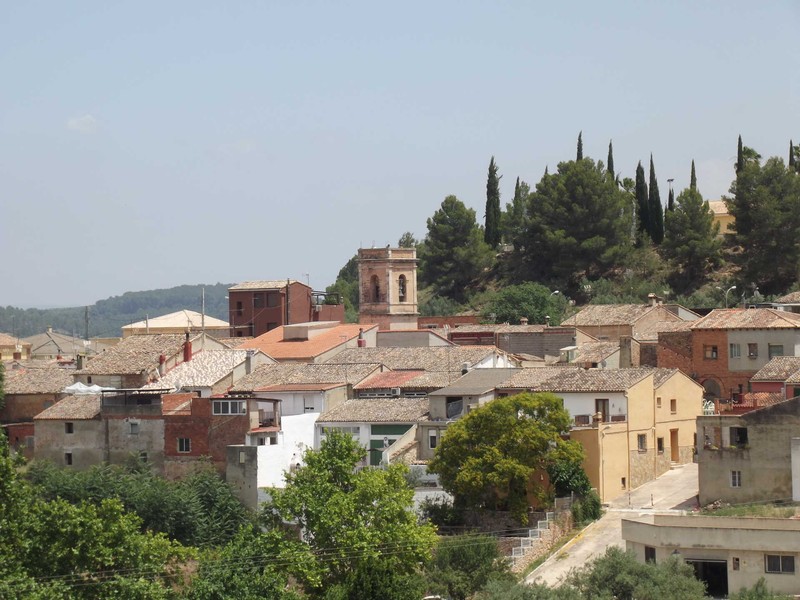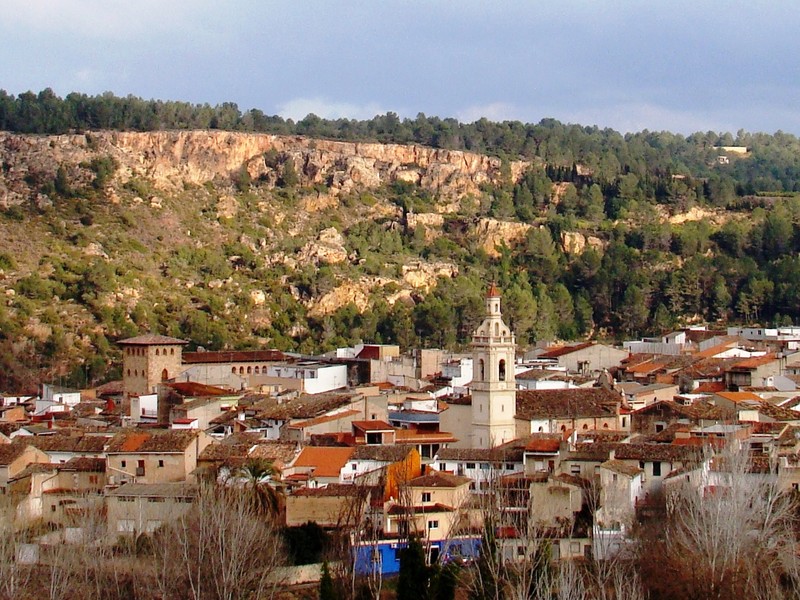Pico Caroche (Bicorp)
The Caroche or Caroig peak is a mountain of 1,126 meters, located in Teresa de Cofrentes, Spain. It is situated
During the 8th to 13th centuries, Millares was inhabited and frequented by Berbers who spoke the Amazigh language. Thus, it retains place names such as Tambuc, which shares its etymology with the famous city and region of Timbuktu, located on the southern desert border of the Sahara. It is known as Ten-Buqt in the Tamasheq Berber dialect and means “the farthest part”. Curiously, Tambuc is located on the southern desert border of the municipality of Millares, a 4-hour walk for the shepherds of the Middle Ages.
However, the most surprising thing isn’t the coincidence of the place name, but rather the existence in the dry and rocky Tambuc ravine of an extraordinary paleontological site. A group of 400 dinosaur footprints can be found here fossilised in the rock. Some 80 million years ago, during the Cretaceous period, this remote site was a large coastal plain, which enabled the footprints to be pressed into the mud, which then subsequently petrified. The footprints cover an area of around 30,000 square metres, they are protected as a highly prized asset of cultural interest, thanks to their uniqueness, and are known and visited by scholars from all over the world. Of course, this site also constitutes the main tourist attraction of Millares.
Through the “Walking with Dinosaurs” programme, guided visits are provided to a site that help us to imagine what happened all those millions of years ago at an instant in time when the tide had gone out, as it was then that the footprints of several theropod and ornithopod dinosaurs, including the Struthiosaurus, were made. They were subsequently covered by sediment as the tide came in, this hardened into mud and ultimately became fossilised. Erosion from the water in the ravine subsequently revealed them in the limestone stromatolite laminae (sheets of flat stone) that lie sub-horizontally, that is to say, very slightly sloping.
Among the set of footprints, distributed between the East Tambuc and West Tambuc sections, 84 complete and fragmentary tridactyl footprints are of particular interest. Some of them form “trails” indicating the animal’s movements, which can be followed. For example, the West Tambuc group was travelling southwest. These were medium or small-sized dinosaurs and the individuals had a range of different ages. Their excellent state of conservation means that protective measures are not required at the site.
To give an idea of the type of dinosaur that roamed around Millares in the Cretaceous period, in 2018 a realistic reproduction of a Struthiosaurus was installed in Millares. The species lived between approximately 83 and 56 million years ago, it was protected by body armour, was only 2 metres long and 70 centimetres high and weighed around 100 kilograms. Its hips, neck and tail were covered with sharp bony plates, completed by a pair of long spikes on its shoulders, and many smaller ones on its sides.
The Caroche or Caroig peak is a mountain of 1,126 meters, located in Teresa de Cofrentes, Spain. It is situated
You will love La Canal de Navarrés! It’s an ideal destination for the whole family, to discover with friends, and

Estubeny, located in the interior of the province of Valencia, is an inland destination that hides a unique natural space,

Anna is a beautiful municipality in the Canal de Navarrés, well known for its Anna Lake, a lagoon surrounded by
Copyright © 2023. La Canal de Navarrés. All rights reserved.
Do not hesitate to contact us for any further information.
This website uses cookies so that we can provide you with the best user experience possible. Cookie information is stored in your browser and performs functions such as recognising you when you return to our website and helping our team to understand which sections of the website you find most interesting and useful.
Strictly Necessary Cookie should be enabled at all times so that we can save your preferences for cookie settings.
If you disable this cookie, we will not be able to save your preferences. This means that every time you visit this website you will need to enable or disable cookies again.